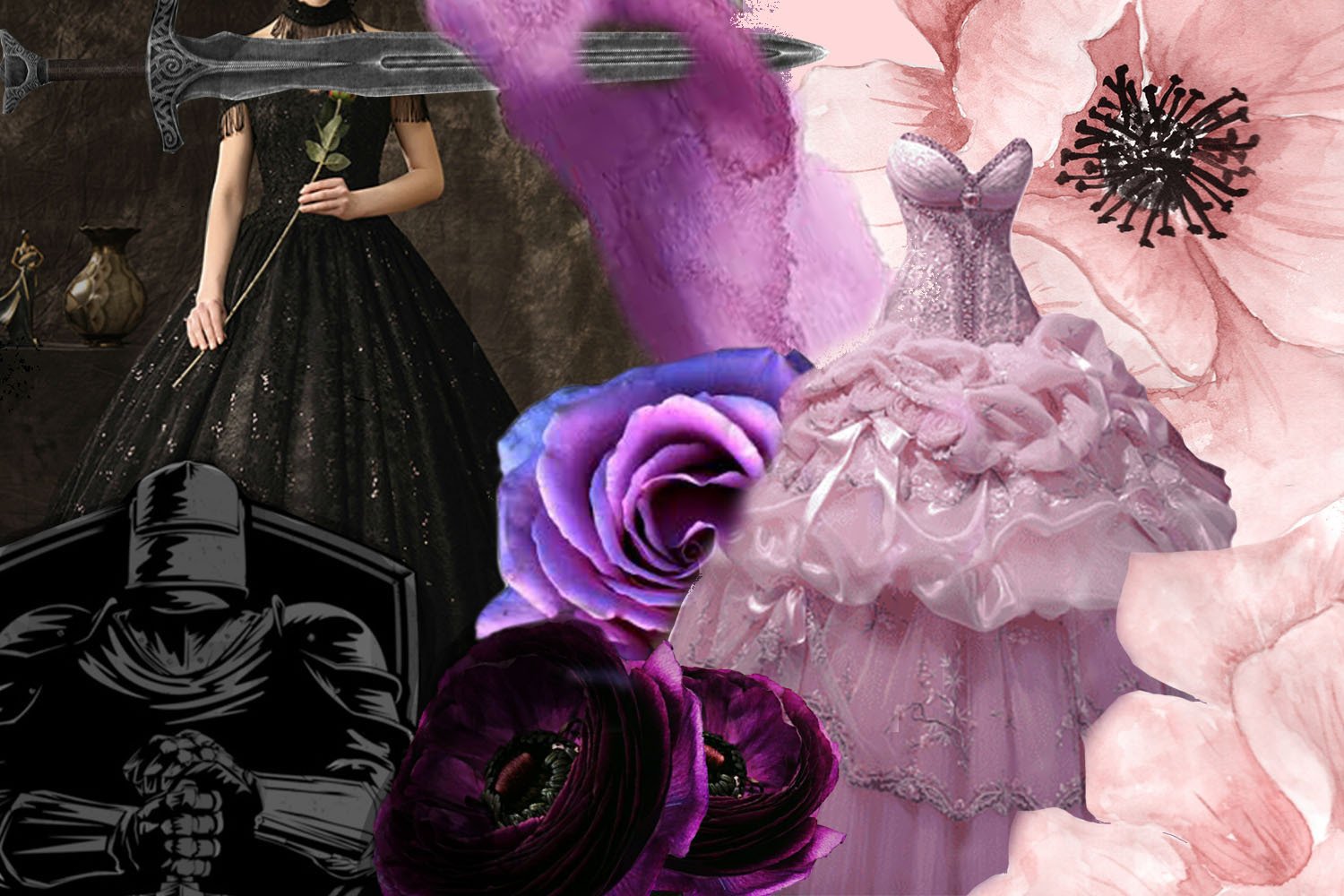Are you Good or Evil? Your Happily Ever After Through Fashion
Graphic by Allie Wicks.
Warning: This article contains spoilers.
Ever wonder who teaches the princess to be beautiful, or the knight to be brave or the villian to be clever? Netflix’s new movie, The School for Good and Evil, takes two human best friends to a fairytale school. The problem is that one of them—the one who actually wants to leave her boring home for this magical land—is placed in the wrong school.
Image courtesy of Netflix.
In this realm, the School of Good is beautifully filled with flowers, ball gowns, dreamy knights and shining pastels. In contrast, the School of Evil is a hostile environment full of snappy and mischievous students like Captain Hook’s son, the daughter of Snow White’s witch and now Sophie, who wants to be a princess. Only 100 feet away, Agatha, Sophie’s best friend who was called a witch by their village, is dropped into the shallow, pompous School of Good.
Each rejects the fate they were given and must forge their own path. They face rejection, love, jealousy, power, helplessness and greater powers of destruction: all the makings of a great movie. And the costume design team? They understood the assignment, creating fashion pieces that reflect Sophie and Agatha’s perilous yet magical adventure.
Sophie is forced to wear old rags as a symbol of her wickedness in the School for Evil; however, this fashion setback does not stop her from pursuing the School of Good. The Dean of the School of Evil goes to greater lengths to have Sophie accept herself as evil.
Moments after the School of Evil’s Dean cuts off her long blonde locks, Sophie curates her own fashion show to accept the new version of herself. In all black, Sophie struts a corset, an asymmetrical skirt, fishnet on her legs and arms, and finishes the look with a crown of dead vines. Billie Eilish’s “You Should See Me in a Crown,” plays as Sophie struts past lines of students, both good and evil, to activate her magical powers. While this moment is, for lack of better words, epic, it also demonstrates how fashion allowed her agency against adversity. Her makeover was a claiming-of-herself so powerful that it even surprised the Dean of the School for Evil.
Image courtesy of The New York Times.
On the other hand, Agatha is forced into pink, rose, salmon and hibiscus ball gowns, and they all disgust her. She easily overlooks the superfluidity of practicing how to smile, fitting the standards of a princess and finding true love, focused on finding their way back home. Agatha knows herself very well and doesn’t need to fit into any role devised for her. What ultimately saved fairyland was not the students of the School for Good, but Agatha’s agency and love for her friend. She rejected the ball gowns because she knows how to express her true self: the straight-legged, oversized pants, trenchcoat and small scarf she wears in her village. And she is going to do everything she can to return there.
At the climax of the movie, Sophie and the students from the School of Evil get into a vicious battle with Agatha and the princes from the School of Good. Before their fight, there is a magical transformation: Sophie uses her magic to change the “evil” students’ clothes to white and the “good” students’ clothes to black. Sophie wants to change the schools themselves since the schools won’t change for her. Even after being taught that evil attacks and good defense, the “good” students attack, thereby resisting social change. Fashion demonstrates that their battle is not to stop evil or defend good, but rather, it's about the fear of breaking boundaries. In a room full of evil and good, and black and white, there is no room for gray.
As the larger forces at play are conquered by these best friends, the walls between good and evil collapse, and they are left with no binaries in their costumes. The Storian, the pen that narrates all fairytales, concludes that this happily ever after was simply about friendship. The unwavering love between friends has the power to break century-old walls. Fashion illustrated their emotional path from not fitting into their schools to battling the foundations of our fairy tales. As the two girls return home through a magic portal, their clothes change once again into the raggy pastel dress and the oversized pants and trench coat from their human lives. While not much has seemed to change since the first time we met these two, we soon learn that they still have their magic.
In the seams of Agatha’s and Sophie’s adventures, fashion illustrated their emotional development. Once the two girls arrived home, they returned to their original clothes because they finally, know who they are: maybe a little evil and a little good, but certainly best friends. Fashion allowed for experimentation, social change statements and an expression of identity; Fashion allowed them the versatility to discover the pieces that best fit them, and to me, that’s the magic!



